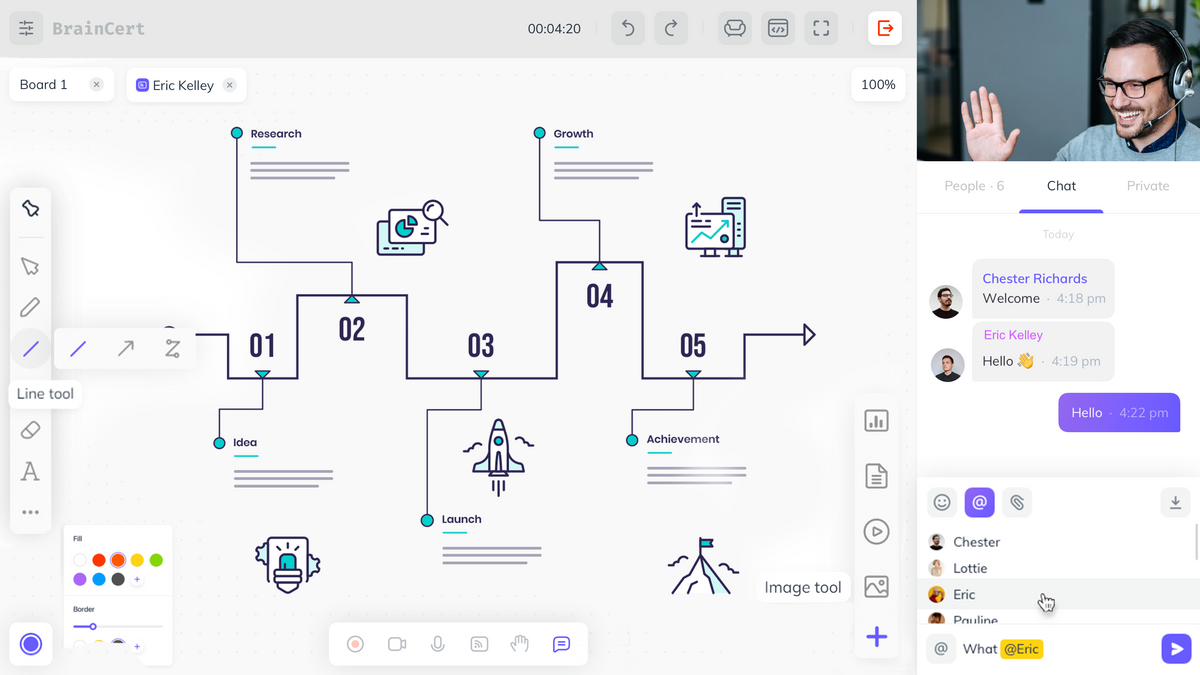Gone are the days when a simple board meeting required the physical presence of all involved parties. A feat that is not only stressful to the participants but in most cases potentiates a drop in productivity, since they have to navigate from their distinct geographical locations to the venue of such events.
Welcome to the future where scheduled online classrooms, events and meetings are organized with the full participation of all relevant parties regardless of their geographical locations through the use of online virtual classrooms.
Even before the advent of such virtual communications tech, traditional methods of simultaneous global interaction such as conference calls and online streaming channels afforded organizations (and groups) the opportunity to interact with individuals in remote locations. The problem was that these routes of communication were most at times laced with inefficiencies. Virtual communication tech, improves on this traditional model by ridding the system of these inefficiencies and incorporating accessory tech features that allow for an endless possibility of uses. Perhaps the most applicable and widespread use of such virtual communications technology is its use in the scheduling of online virtual classrooms.
Virtual Classrooms
A virtual classroom is a real-time simulation of an online learning environment. In such an environment (which could be web or software based), participants are fully immersed and communicate seamlessly with the teacher/instructor and other students, in the same way as they would in real life.
Virtual classrooms utilize state of the art technologies like web conferencing, live streaming, videoconferencing, and Voice over Internet protocols (VoIP) to potentiate flawless interaction. By virtue of this, students and participants are given the opportunity to respond to queries actively, ask questions and where applicable undergo assessment tests. Think of it as your everyday classroom setting, but this time at the comfort of your choice location without the logistic requirements that accompany physical learning environments. Online virtual classrooms proffer a vast array of advantages, prominent amongst which are;
The removal of geographical constraints
With online virtual classrooms the geographic location of both teachers and participants is inconsequential. The fundamental requirement is that both parties have a computer or in some cases mobile devices and a dependable source of internet access.
Highly flexible
Unlike traditional classroom sessions where participants totally miss out on the learning experience when they are not present at the scheduled time, online Virtual classrooms sessions can be recorded, allowing participants to replay it at a much later date. This level of flexibility allows students from all over the world regardless of time zones and consequent dissimilarity in schedules to move at the same pace in the learning curve.
Scalable Logistic Requirements
Ever been involved in organizing a meeting or better still delivering a lecture at a specified physical location where participants arrive from different places. If you have, you would agree with me that it could be especially difficult to organize. From securing a venue to setting up public address systems (PAS), and sometimes crowd control, the list of logistic problems goes on and on. Virtual classroom technology filters off such challenges, for its users, the only concern is securing a suitable virtual framework and reliable internet connection. With the current advancement in technology and arrival of fast and speedy mobile and broadband networks, these two do not pose a challenge.
Potential to cover a vast demography
With virtual classrooms, just like geographic location, the number and scope of participants is not an issue. The participating audience can range from a few people to millions and possibly billions. Given the right architectural framework and adequate provisioning, it is even possible to host the whole world in one single online virtual classroom.
Virtual classrooms stand poised to transform the way individuals and educational institutions go about content delivery. With the sustained interest displayed by tech developers and stakeholders alike, it is expected that in the not so distant future virtual classrooms would be the standard for worldwide content delivery.










